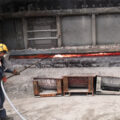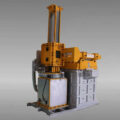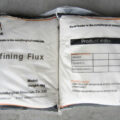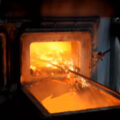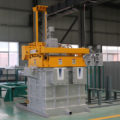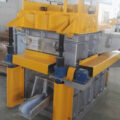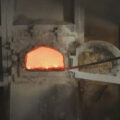Hydrogen embrittlement is a phenomenon in which a metal becomes brittle due to hydrogen absorption, its plasticity decreases, and it breaks on its own. This ruptured form of material is bound to cause unexpected accidents and pose a great threat to safety. With the extensive application of metal materials, most aluminum foundries use a rotary degassing system to remove hydrogen from molten aluminum. AdTech offers inline aluminium degassing unit for high precision aluminum melt purification.

During the electroplating process of aluminum castings, hydrogen permeation often occurs in the coating and the lattice of the base metal. At this time, the internal stress of the aluminum casting becomes larger, the plasticity is reduced, and it is easy to break. In order to control the possible hydrogen penetration during the electroplating process and prevent hydrogen embrittlement, aluminum castings need to be tested. There is a simpler and more convenient dehydrogenation test method to detect the dehydrogenation effect.
How to Detect the Aluminium Degassing Effect
The specific methods to prevent the occurrence of hydrogen embrittlement are as follows:
Inspection supplies: paraffin or petroleum jelly.
Inspection equipment: beaker (fireproof container), iron stand, thermometer, asbestos net, alcohol lamp.
Inspection method: Use a beaker to hold the appropriate amount of paraffin, place the beaker on the asbestos mesh of the iron stand, and ignite an alcohol lamp to heat the paraffin until it is completely melted (the paraffin can completely immerse the aluminum casting). Use a thermometer to measure the temperature of the paraffin liquid and keep it at 160 ~ 190 ℃, within this temperature range for 5min to remove its water content. The tested aluminum casting is degreased by hot soapy water and dried, and placed in paraffin wax.
If bubbles are generated within 10s (hydrogen is formed or precipitated on the surface of the aluminum casting), it proves that the aluminum casting is not good or not at all. If no bubbles are generated, the dehydrogenation effect is good. Vaseline can also be used instead of paraffin, but the temperature must be controlled within (100 ± 5) ℃.

